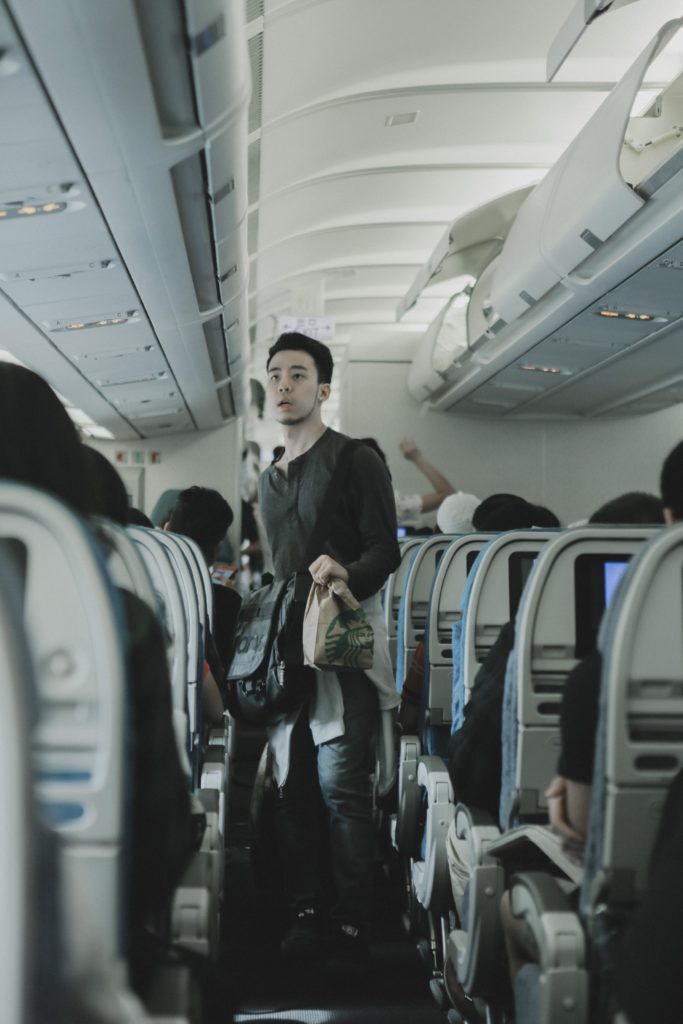One of the largest international flight attendants unions is taking up arms — actually, thermometers — in a fight against what they claim are dangerously hot cabins.
The Association of Flight Attendants CWA is pushing congress to regulate temperatures onboard passenger jets. To make its case, many of the 50,000+ Union members are carrying thermometers to work to log cabin temperatures to submit to regulators.
The union also launched a mobile app, called 2Hot2Cold, for both flight attendants and passengers to use to complain about temperatures.

The next time you board an overheated aircraft cabin, flight attendants want you to report the temp to regulators.
Then There Was The press Conference
Last week, at Reagan National Airport in Washington, D.C. Union President Sara Nelson laid out the health hazards the union believes are affliction its members as a result of ridiculously high (or sometimes freezing) cabin temperatures.
“This is an issue of safety, health and security. If it’s too hot, people can become dizzy, unaware, suffer from heat stroke,” Nelson said. “If it’s too cold, they can experience cold stress or even hypothermia.”
Everyone has a preference about cabin temperature, and personally I’m comfortable on exceeding 90 percent of flights I’ve taken the last few years. But Nelson offered a tidbit that I found pretty unbelievable. The agreed-upon industry standard for cabin temperature is between 65 degree and 75 degrees farenheit, unless the entertainment monitors are on, and then the proposed standard is 85 degrees.
That hardly seems like a stringent standard. Jet aircraft have jet fuel powered heat exchangers capable of ingesting compressed -60 degree air and stabilizing it to June morning temperatures. Surely we can do better that 65 to 75 or maybe sometimes 85 degrees.
But airlines are resistant even to this regulation, according to The Economist. Apparently they think it’s a good idea to save fuel by slow-roasting passengers.
There Have Been Hospital Visits
Last summer a 2-month-old boy ended up in the hospital, with heat stroke, sitting on a United Express jet.
Last month passengers were left on a Thomas Cook flight for two hours without air circulating, long enough to induce vomiting, according to the U.K. Independent newspaper.
Regulators already balked at one popular proposal this year, declining to set minimums for seat pitch. It will be interesting to see if they take the heat and bite on this proposal.
The responses below are not provided or commissioned by the bank advertiser. Responses have not been reviewed, approved or otherwise endorsed by the bank advertiser. It is not the bank advertiser's responsibility to ensure all posts and/or questions are answered.
4 comments
This is all great but many times I see FA’s struggle to regulate cabin temperatures. And then you have cultural differences like super warm flights in Asia. I think there are bigger issues. Besides aren’t they there “primarily for your safety” so service matters little as does their own comfort. Seriously though I think many FA’s are too warm since they run around the cabin and also have to wear polyester or suit jackets, etc. Silly.
I’ve been on planes that were uncomfortably cold, but that’s always been at altitude; and while it was unpleasant, I don’t think anyone was close to sickness.
Hot cabins is a completely different story. It does cause folks to get sick and cabins oftentimes get really hot. It almost always happens on the ground prior to engine start. It’s sometimes driven by penny pinching airlines choosing not to run their A/C packs via their APU. Have you noticed that when the planes engines spoil up, the plane starts cooling down? That’s because the jet engines are sending air back to the Air Cycle Machine (ACM). The ACM is the heart of the A/C pack. It’s an air powered turbine capable of taking in hot air and making it cold. But it requires a large amount of air flow in order for it to work. This is why you feel the air from the gasper vents surge with the engine RPM as you taxi. The more air supplied to the ACM, the more it will put out (up to a certain level). The APU is capable supplying air to the ACM cool down the cabin, but it burns more fuel in order to do it. I’ve noticed airlines not running their a/c packs at all if the plane has a quick turnaround. As most of us have experienced, when a plane fills up with passengers, it gets hot and stuffy rather quick. In most cases, airlines could cure this condition if they really wanted to, it would just cost them more money.
There are other things that can cause hot cabins. I work in aviation maintenance, and I could write out several scenarios, but most of the time, it’s the airline choosing not to run their APU to supply enough air to the packs to cool the cabin.
Why is the plane very hot after meal service in the air? Does the PIC turn up the temp to 78-80 so that the flight attendants can rest/chat while the rest of us sweat?
In Feb I was on a well delayed Swiss flight from JFK to ZRH and in NY it was snowing, we had to wait for hours on the tarmac waiting for de-icing but onboard we had a temperature like Sahara desert in the Summer, I’ve asked to the FA if it was not damn hot and she replied the captain had to melt the snow/ice over the plane. It was really crazy.